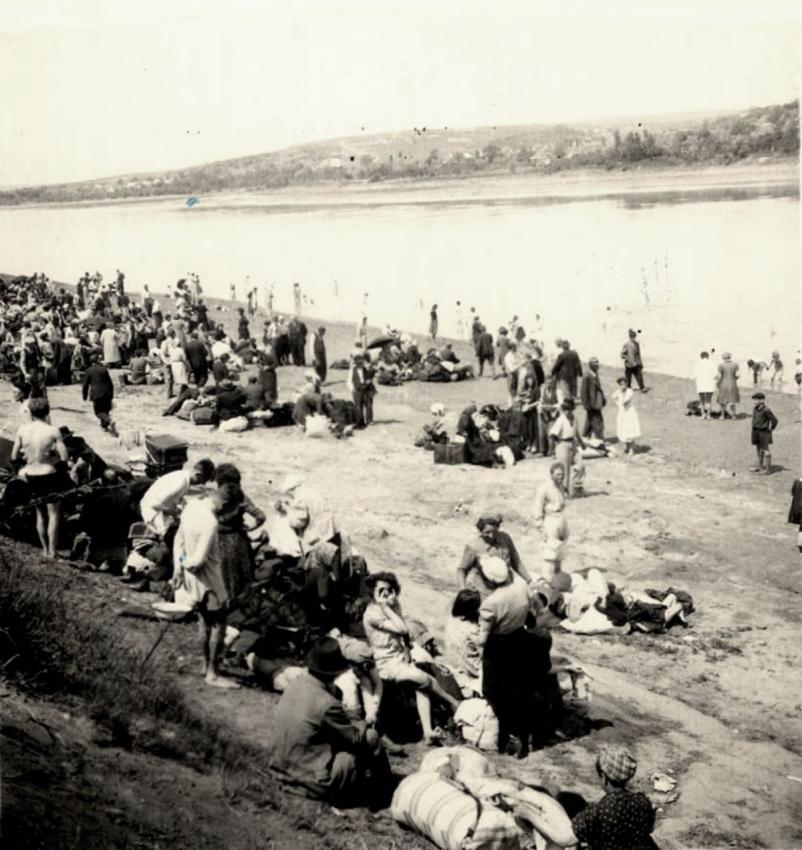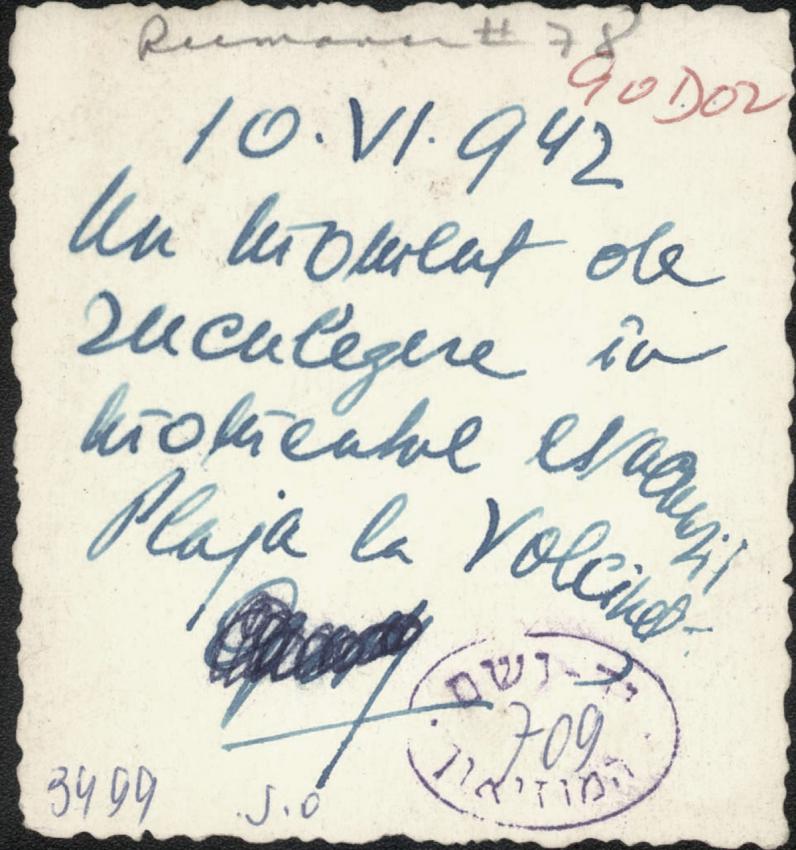Transnistria is a region in western Ukraine, across the Dniester River from Romania, which Hitler handed to Romania as a reward for its participation in the war against the Soviet Union.
In June 1941, Germany and Romania invaded Ukraine. Tens of thousands of the 300,000 Jews living in Transnistria before the war were murdered by Einsatzgruppe D under the command of Otto Ohlendorf, and by the German and Romanian armies. At the same time, the Romanians started murdering thousands of Romanian Jews, mostly those living in the areas of Bessarabia and Bukovina. From 15 September, the Romanians deported some 120,000 Jews from Bessarabia, Bukovina and northern Moldavia to Transnistria. There was a halt in the deportations for the first half of 1942, but from the summer until October 1942, tens of thousands more Jews were deported. In total, approximately 200,000 Jews were deported from Romania to Transnistria.
Most of the Jews from Bessarabia and Bukovina were confined in camps and ghettos in Transnistria. Among the largest and most lethal camps were Bogdanovka, Domanovka and Acmecetca. In Bogdanovka alone, some 40,000 Jews were shot to death by Romanian gendarmes, Ukrainian policemen and local German units.
From the very beginning, Jewish leaders and institutions in Bucharest made efforts to provide help to the deportees. The special central committee set up collected money and contributions in kind, and dispatched financial aid, clothing, and medicines to the refugees. The central aid committee was finally granted permission in 1943 to send a delegation to visit the area. Jewish leaders in Bucharest established contact with Jewish organizations abroad, and obtained financial aid for the deportees from the American Jewish Joint Distribution Committee, the Rescue Committee of the Zionist Organization, the World Jewish Congress, and OSE.
Over 400,000 Jews incarcerated in concentration camps and ghettos in Transnistria were murdered or perished from starvation, hypothermia and disease. About half were deportees from Romania, while the remainder were Transnistria residents who became trapped there with the German-Romanian invasion.
Yad Vashem Photo Archives DO290








